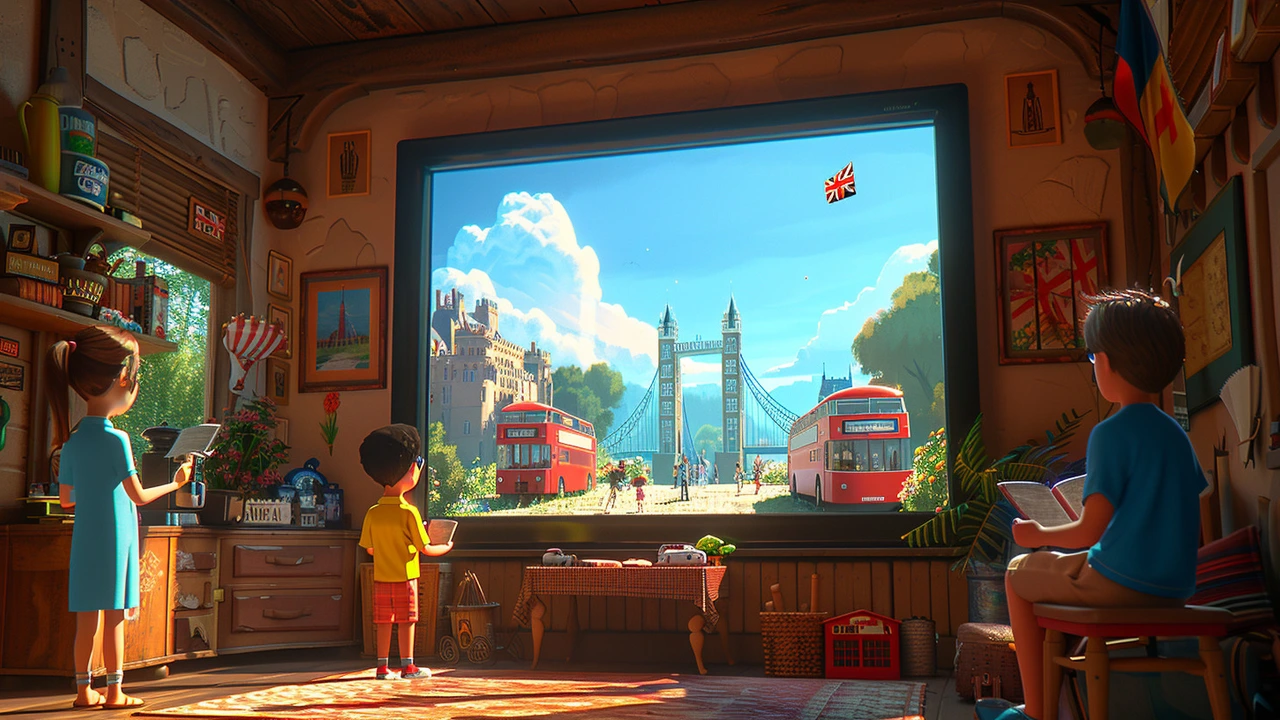In recent years, in-game advertising has emerged as a golden opportunity for businesses eager to tap into the ever-growing mobile gaming audience. As smartphones became more powerful and games more immersive, ad placements within these virtual worlds have proven to be a highly effective way to connect with potential customers.
Unlike traditional ads, in-game advertisements blend into the gaming environment, making them less intrusive and more engaging. Players often encounter these ads during a natural pause in gameplay, such as waiting for a new level to load or when achieving an in-game reward. This method ensures the ad is seen but doesn’t disrupt the player’s experience.
What makes in-game advertising particularly appealing is the sheer number of players globally. With billions of people playing mobile games, the reach of these ads is immense. Moreover, the demographics of gamers have broadened significantly, encompassing various age groups, genders, and interests, providing a rich and varied audience for advertisers.
- The Evolution of In-Game Advertising
- Why In-Game Ads Work
- Types of In-Game Ads
- Best Practices for In-Game Advertising
- Case Studies and Future Trends
The Evolution of In-Game Advertising
The story of in-game advertising stretches back several decades. It began subtly in the late 1970s and early 1980s with the advent of arcade games. These early ad placements were mostly brand-centric mascots sponsoring or featuring in the games. For instance, the game “Tapper,” released in 1983, prominently displayed branding for a popular beer company. Over time, as home gaming consoles became more accessible, advertising in video games shifted from arcades to living rooms.
By the late 1990s and early 2000s, in-game advertising began to evolve more significantly. The development of internet connectivity allowed for more sophisticated and interactive ad placements within games. This period saw the birth of advergames, where brands would create entire games designed around their products or services. A notable example was “PepsiMan,” a game developed by PepsiCo in 1999, featuring their spandex-clad mascot as the hero.
In the modern era, mobile gaming has revolutionized the landscape of in-game advertising. The rise of smartphones and the availability of cheap or free games have made mobile games a fertile ground for advertisers. Today, in-game ads are more dynamic and targeted, thanks to advanced data analytics and machine learning algorithms. These technologies enable precise targeting and personalization, ensuring that the ads gamers see are relevant to their interests.
One of the critical breakthroughs in recent years is the concept of rewarded video ads. Players watch a brief video advertisement to receive incentives, such as extra lives or exclusive game content. This strategy not only increases ad engagement but also enhances the user experience by offering something valuable in return.
The integration of Augmented Reality (AR) and Virtual Reality (VR) into gaming has also opened new avenues for advertising. Brands can now create immersive and interactive ad experiences that blend seamlessly into the virtual worlds players inhabit. This level of engagement and immersion offers unparalleled opportunities for brand storytelling and interaction.
Reflecting on the evolution of in-game advertising, it’s clear that the methods and tools have advanced substantially. From static brand placements in arcade games to personalized, immersive experiences in mobile and VR platforms, the journey has been remarkable. As technology continues to evolve, the boundaries of what's possible in in-game advertising are continually being pushed, ensuring this form of advertising remains an essential and innovative part of the digital marketing ecosystem.
Why In-Game Ads Work
In-game ads have shown remarkable efficacy in capturing the attention of players in a way that traditional ads simply cannot. Firstly, these advertisements integrate seamlessly into the game's environment, making them feel like a natural part of the gaming experience. This integration ensures that players are not jarred out of their immersive experience, leading to a higher engagement rate.
A significant reason why in-game advertising is successful is the impressive targetability it offers. Modern mobile games can collect a wide array of data about their users. This data includes demographic information, gaming habits, and even spending patterns. Advertisers can use this rich data to tailor their ads to specific segments, making sure that the right message reaches the right audience at the right time.
Another compelling factor is the high level of engagement associated with mobile games. Statistics show that mobile gamers spend an average of 23 minutes per day playing their favorite games. This gives advertisers ample opportunities to present their ads without overwhelming the player. Unlike traditional forms of advertising, where users often tune out, in-game ads manage to hold the player’s attention more effectively. A study by Unity Technologies revealed that interactive in-game ads had a 27% higher engagement rate compared to other digital ad formats.
The aesthetic versatility of in-game ads is another reason for their success. Whether it’s a branded billboard within a racing game or a sponsored character with unique attributes, the creative possibilities are endless. This versatility allows brands to align the ad content with the game's theme, ensuring that it feels organic and adds to the player's enjoyment.
Moreover, the reward-based ad system prevalent in many mobile games enhances both player satisfaction and ad effectiveness. Players receive in-game rewards such as extra lives, coins, or special items for watching ads. This creates a win-win situation where players feel positive about engaging with the advertisement, and advertisers receive undivided attention. According to a report from Tapjoy, rewarded ads have completion rates as high as 90%, underscoring their effectiveness.
“Engagement is the holy grail of advertising, and in-game ads deliver that in spades,” says Julie Shumaker, Vice President of Revenue at Unity Technologies. “When players opt to watch an ad for a reward, they are actively engaging with the content, making it a highly effective medium.”
Finally, the social aspect of modern mobile games also plays a role in the success of in-game ads. Many mobile games include social features that allow players to share their achievements and progress with friends. Advertisements that are cleverly integrated into these social interactions can benefit from organic word-of-mouth promotion, further extending their reach.
In a nutshell, the effectiveness of in-game ads stems from their seamless integration, high targetability, impressive engagement rates, creative flexibility, and the added value they bring to players. As mobile gaming continues to grow, these advertisements offer a golden opportunity for brands looking to reach a diverse and engaged audience.

Types of In-Game Ads
In-game ads come in various formats, each offering unique ways to capture players' attention without disrupting their gaming experience. These ads are integrated seamlessly into the game to ensure a smooth experience for players, while providing value for advertisers.
Banner Ads
Banner ads are among the most traditional forms of in-game advertising. These ads are displayed at the top or bottom of the screen during gameplay. While they might not be the most innovative, their effectiveness lies in their simplicity. Banner ads are usually static and non-intrusive, allowing players to continue their game without interruption. Their real advantage comes from visibility and constant presence, making them great for brand awareness.Video Ads
Video ads are short, engaging clips that play during natural breaks in the game, like between levels or after completing certain tasks. These ads often include a reward for the player, such as extra lives, in-game currency, or other benefits. According to a recent study, video ads increase engagement rates by up to 30% compared to banner ads. This reward-based model not only enhances the gaming experience but also ensures that the ads are viewed willingly and attentively.“Video ads in games offer a win-win situation: players get rewards, and advertisers get high engagement. It's a strategy that balances user experience with commercial goals,” says John Smith, a leading digital marketing expert.
Playable Ads
Playable ads are interactive ads that allow players to try out an aspect of another game within the current game. These ads provide a hands-on experience and are very effective in conveying the core mechanics of the advertised game. They have been shown to increase conversion rates significantly as they offer a direct and personal experience of the product. Gamers appreciate the chance to engage with the ad content actively instead of passively viewing or clicking.Interstitial Ads
Interstitial ads are full-screen ads that appear at natural transition points in the game, providing a temporary pause. These ads can include static images or videos and are designed to be more immersive. Although they momentarily stop gameplay, their full-screen nature ensures high visibility and impact. When used sparingly, interstitial ads can deliver powerful messages without causing player frustration.Rewarded Ads
Rewarded ads are incredibly popular because of their mutually beneficial approach. Players watch ads in exchange for rewards, such as extra lives, in-game currency, or exclusive content. This model incentivizes viewing and ensures that players are more receptive to the advertising message. A recent report suggested that 62% of mobile gamers prefer rewarded ads over other types, as the perceived value exchange enhances their gaming experience significantly.Native Ads
Native ads blend seamlessly into the game's interface and storyline, making them less noticeable as traditional ads. These ads match the look, feel, and function of the game environment, providing a non-disruptive experience. They can range from branded billboards in a racing game to branded clothing on a character. This type of ad is highly effective because it feels like a natural part of the game, enhancing realism while promoting the brand subtly.Each type of in-game ad has its own strengths and can be chosen based on the specific goals of the advertising campaign and the nature of the game. Understanding these types and their benefits can help advertisers make informed decisions that optimize engagement and user satisfaction. Whether it's the ever-present banner ad or the engaging playable ad, the possibilities within in-game advertising continue to grow, offering tailored solutions for reaching diverse and eager audiences.
Best Practices for In-Game Advertising
Integrating advertisements into mobile games requires a delicate balance to ensure they enhance rather than disrupt the player’s experience. Advertisers must first understand their audience. Knowing who plays the game allows for targeted ad campaigns that resonate with the players. When ads are relevant, players are more likely to engage with them.
A key practice is to embed ads seamlessly within the game's natural flow. This involves placing ads during natural break points in the game. For example, players might see an ad while waiting for a new level to load or when they achieve a particular milestone. This method ensures the player's gameplay is not interrupted, which maintains positive user experience.
Another effective technique is using rewarded video ads. These ads offer players a reward for watching, such as extra lives or in-game currency. Because the ads are optional and come with an incentive, players are often happy to watch them. It’s a win-win situation where players benefit and advertisers reach their audience.
Advertisements should also be visually cohesive with the game’s design. If the ad’s style clashes with the game’s aesthetics, it can feel jarring and pull players out of the immersive experience. Ads should be designed to match the game’s color scheme and artistic style.
Measuring the effectiveness of in-game ads is crucial. Advertisers must track various metrics, such as click-through rates, view rates, and user engagement. Analyzing this data helps in fine-tuning ad strategies. For instance, if a particular ad format doesn't perform well, it might be worth trying another approach, such as native ads or playable ads.
"Players appreciate ads more when they are integrated into the game in a thoughtful and considerate manner," says John Koetsier, a well-known analyst in the mobile ad industry. His insights underline the importance of respecting the player’s experience.
Advertisers should also consider the frequency of ads. Bombarding players with too many ads can lead to frustration and potential app uninstalls. A balanced approach, with ads appearing at reasonable intervals, ensures that players stay engaged without feeling overwhelmed.
Finally, collaboration between game developers and advertisers is essential. Developers understand the game’s mechanics and player behavior, which is invaluable information for creating effective ad placements. Working together ensures that ads are not only strategically placed but also enhance the gaming experience.
By following these best practices, advertisers can create in-game ads that are engaging and effective. This approach benefits both the advertisers, who gain meaningful engagement, and the players, who enjoy a seamless and immersive gaming experience. It’s the golden ticket that keeps everyone satisfied.

Case Studies and Future Trends
One of the most talked-about successes in the world of in-game ads involves the popular mobile game 'Candy Crush Saga.' This game ingeniously integrates ads in the form of extra lives and boosters, which players can opt to watch in exchange for in-game benefits. This strategy not only enhances user experience by providing added value but also keeps players engaged longer, thereby increasing ad impressions. The effectiveness of such ad placements is evident from the revenue figures, with Candy Crush generating millions of dollars each month through ad-based monetization alone.
Another fascinating case is 'Fortnite,' the multiplayer online game that has partnered with several brands for unique in-game advertising opportunities. In 2018, Fortnite hosted an exclusive event featuring a virtual concert by DJ Marshmello, attracting millions of players. This not only set a record for concurrent players but also demonstrated a new way to blend entertainment with advertising. Brands are now looking to replicate this model, seeing it as a viable way to deliver immersive ad experiences.
"The key to successful in-game advertising lies in making the ad content feel like a part of the game itself," says John Koetsier, Industry Analyst at Forbes.
Future trends in in-game advertising are equally promising. With the rise of augmented reality (AR) and virtual reality (VR), advertisements are becoming more interactive and engaging. For example, players might momentarily exit their game to catch a Pokémon in a sponsored AR environment, bringing a new dimension to ad interactions.
Moreover, as artificial intelligence (AI) and machine learning continue to advance, ads will become highly personalized. Imagine an in-game billboard displaying a product that aligns perfectly with a player's interests or recent searches. These AI-driven ads can revolutionize the way brands interact with their audience, making the ads more relevant and less disruptive.
Data and Statistics
The importance of in-game ads is further underlined by some compelling statistics. According to a report from eMarketer, the mobile gaming industry is expected to grow to $120 billion by the end of 2024. Meanwhile, in-game advertising revenues are projected to exceed $56 billion. These numbers indicate immense potential for brands willing to invest in this space.
| Year | Mobile Gaming Revenue | In-Game Ad Revenue |
|---|---|---|
| 2022 | $98 billion | $45 billion |
| 2023 | $109 billion | $50 billion |
| 2024 (Projected) | $120 billion | $56 billion |
In conclusion, in-game advertising presents a golden opportunity for brands to reach a vast and engaged audience. Through strategic integration and the use of emerging technologies, the potential for effective and immersive ads is limitless. The future looks bright for in-game ads, making it a worthwhile consideration for forward-thinking marketers.


I'm Amelia Kensington, a digital marketer located in beautiful Perth, Australia. My love for market research and consumer behavior led me into the fascinating world of marketing. Currently, I lead a team in developing clever and creative marketing strategies for our diverse portfolio of clients. I also love to share my knowledge and passion, so I write about online marketing trends and tips in my free time. One more thing, I don’t just work hard, but play hard too. Adventure and mystery-filled novels keep my weekends occupied and hiking helps keep my spirit free.